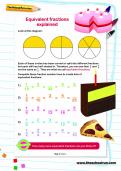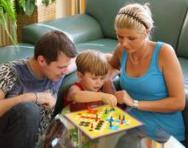Autism and ADHD in girls

It’s a popular belief that autism and attention deficit hyperactivity disorder (ADHD) are ‘boy problems’. But recent research suggests that both conditions are as likely to affect girls as boys, despite the fact that boys are far more likely to be diagnosed, and at a younger age.
‘Boys are diagnosed with ADHD at a ratio of four to every one girl, but this tends to be because the condition presents differently in girls, and is more likely to be overlooked,’ explains Dr Tony Lloyd, chief executive officer of the ADHD Foundation.
And the statistics for autism diagnosis are similar, with just one-fifth of girls with Asperger syndrome (so-called high functioning autism) receiving a diagnosis by the age of 11, compared to 50 per cent of boys with the same condition.
Spotting the signs
The signs of autism and ADHD in girls tend to be less obvious than in boys. ‘Girls can be more adaptive than boys, and better at masking the traits typically associated with autism, for example by mimicking the behaviour of other girls,’ explains Carol Povey, director of the National Autistic Society’s (NAS) Centre for Autism.
Tony agrees. ‘Girls with ADHD tend to be more compliant and less hyperactive, so their difficulties stay under the radar,’ he says.


Boost Your Child's Learning Today!
- Start your child on a tailored learning programme
- Get weekly English & maths resources sent direct to your inbox
- Keep your child's learning on track
Trying to hide their issues can be hard work, which can have an impact on girls’ emotional and mental wellbeing. ‘Whereas boys may be picked up on because of an obvious learning delay or social impairment, or behavioural problems such as outbursts of anger, for girls, the indicators tend to be around anxiety and frustration, which can lead to problems such as depression, eating disorders and self-harm,’ Carol explains.
Girls with autism are also more susceptible to friendship issues. ‘They often play differently, trying to control the game rather than being inclusive,’ Carol says. ‘They may latch on to the most popular girl and try to copy the way she looks, dresses and acts as a way of fitting in, and are also vulnerable to manipulation and emotional abuse from friends, for example, by being “dared” to misbehave.’
The differences in the way in which autism and ADHD present between the sexes is suspected to be due to their brain function. ‘Girls tend to be ahead of boys in their emotional development, which can make them better at hiding the signs,’ Tony says. ‘Boys also have more testosterone, so their frustration is expressed in physical actions, whereas girls internalise it, which can lead to anxiety.’
Diagnosing ADHD and autism in girls
Because most research into ADHD and autism is based around how the conditions appear in males, it can be harder for girls to get a diagnosis, and it tends to come later – often post-puberty. ‘This is when the troublesome behaviours such as self-harm and eating disorders tend to become more evident,’ Tony explains.
Another difficulty with diagnosis is that schools may be unaware that there’s a problem. ‘Often, the child’s school will say she’s doing fine, because she speaks well, plays with other children and concentrates in class, but she’s actually holding her emotions in, which can result in meltdowns at home,’ says Carol. ‘It can be very difficult for families, who may feel that the school doesn’t believe them.’
Getting an autism or ADHD diagnosis can also be complicated by the fact that in about 40 per cent of cases, children have more than one neurodisability. ‘Children are likely to have a symptom overlap, with traits of dyslexia, dyscalculia, dysgraphia, sensory processing disorder or speech and language difficulties,’ Tony says.
Whichever condition you suspect, the first step towards diagnosis is to approach your GP – but arm yourself with all the information you can gather. ‘Because GPs don’t often see girls with these conditions, it’s helpful to go with some supporting evidence, such as a letter from school or print-outs from a reputable website,’ Carol advises. ‘The GP should then make a referral, ideally to a multi-disciplinary team that can make a diagnosis.’
Both the NAS and the ADHD Foundation have information about the diagnostic process on their websites.
Working with your child’s school
With autism and ADHD less commonly recognised in girls, teachers may try to apply their knowledge of how the conditions present and are managed in boys to your daughter, which may not be helpful. ‘They need to recognise that every child is individual, and respond to those girls’ learning styles, whether they’re visual learners or perform better when they’re doing something,’ says Carol. ‘Utilising their interests is also important, rather than trying to suppress them: if, for example, a girl is hyper-focused on animals, teachers can use that interest to open up the world to them.’
Teachers also need to be aware of the emotional strain that ADHD or autism put on girls, for instance by making sure they have a safe place to go if they are struggling, or a trusted adult who they can speak to. Being aware of friendship issues and the potential for bullying is essential, as well as providing practical resources such as visual timetables for helping them negotiate the school day.
Above all, it’s important to develop a close relationship with your child’s teacher and the special educational needs coordinator (SENCO). ‘You know your child best, so good links with the school are essential,’ Carol adds. ‘You need to be your child’s champion, and the bridge between her and a neurotypical world that she may struggle to make sense of.’

Give your child a headstart
- FREE articles & expert information
- FREE resources & activities
- FREE homework help








